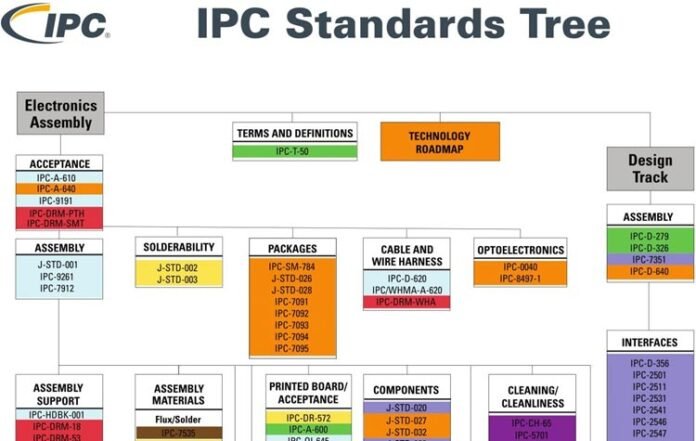PCBs are one of the most popular devices in the world, and have become an integral part of our daily lives. PCB technology is a complex mixture of science and art that cannot be mastered by humans alone – which means that we need tools to aid us in our design processes. Today we are going to discuss one such tool: IPC standards. IPC Standards for PCB Manufacturing
What are the benefits of IPC standards?
IPC standards have been developed over many years to ensure the quality, reliability and performance of printed circuit boards (PCBs). There are a number of benefits to using IPC standards in PCB manufacturing:
-Improved Quality: IPC standards help to ensure that boards meet high quality requirements. This results in fewer errors and more consistent board performance.
-Reliability: Using IPC standards helps to ensure that PCBs are reliable and will not fail during use. This reduces the cost associated with repairing or replacing boards, and also leads to fewer customer complaints.
-Performance: IPC standards promote consistent board performance by ensuring that components are compatible and work together as intended. This leads to faster startup times and improved system reliability overall.
Why is IPC standard important for PCB manufacturing?
IPC standards are important for PCB manufacturing because they help to ensure the accuracy, reliability, and compatibility of electronic products. IPC standards provide a uniform platform for developing and testing new products. This enables manufacturers to produce reliable electronic products with minimal variation, which in turn reduces the chances of product defects.
IPC standards also provide a platform for exchanging information between manufacturers. By sharing information through IPC standards, companies can collaborate on developing new products or improving existing ones. This enables them to create more efficient and cost-effective PCB production processes. Finally, IPC standards help to promote competition among PCB manufacturers, which is beneficial to consumers because it leads to higher quality products at more affordable prices.
The different standards in place for PCB manufacturing.
PCB manufacturers must adhere to a variety of international standards in order to ensure the quality and accuracy of their products.
The most common international standards for PCB manufacturing are IPC-A-610 & IPC-A-611, which define the requirements for dimensional tolerances, soldering parameters, and other quality control measures. Other important standards include JIS G3131 & ISO 10346, which cover materials specifications and environmental testing requirements, respectively.
Manufacturers who want to guarantee the quality of their products will need to be familiar with both IPC-A-610 & IPC-A-611 as well as the more specific standards referenced therein. Doing so will help them meet the stringent requirements of both domestic and international marketsplaces.
Standards that weren’t introduced for PCB manufacturing.
As PCB manufacturers strive to improve efficiency and consistency across production lines, they must also adhere to a slew of industry-specific standards. While many of these standards have been in place for decades, others have only recently been introduced into the PCB manufacturing process.
One such standard is IPC J-STD-020, which governs the fabrication of printed circuit boards. Without adherence to this standard, PCB manufacturers could face serious quality issues down the line.
IPC J-STD-020 was first introduced in 2002 as a way to ensure that circuits on PCBs were properly routed and laid out. Since its inception, the standard has evolved to cover other aspects of PCB manufacturing, such as test methods and packing methods.
While adherence to IPC J-STD-020 is important for ensuring high quality boards, there are a number of other standards that should also be considered when designing a PCB. For example, IPC J-STD-019 covers electrical characteristics for printed circuit boards. This standard ensures that circuits on PCBs are able to handle high voltages and currents without failing catastrophically.
By adhering to multiple industry standards while designing a PCB, manufacturers can create boards that are both reliable and compliant with customer expectations.
Conclusion
PCB manufacturing is a highly regulated industry, and it’s important that your PCBs meet the appropriate IPC standards. If you’re not sure which IPC standards apply to your particular process or product, contact your local governing body for guidance. And remember: always keep track of any changes that might impact the quality or safety of your PCBs.
Check Also: write for us business management
















